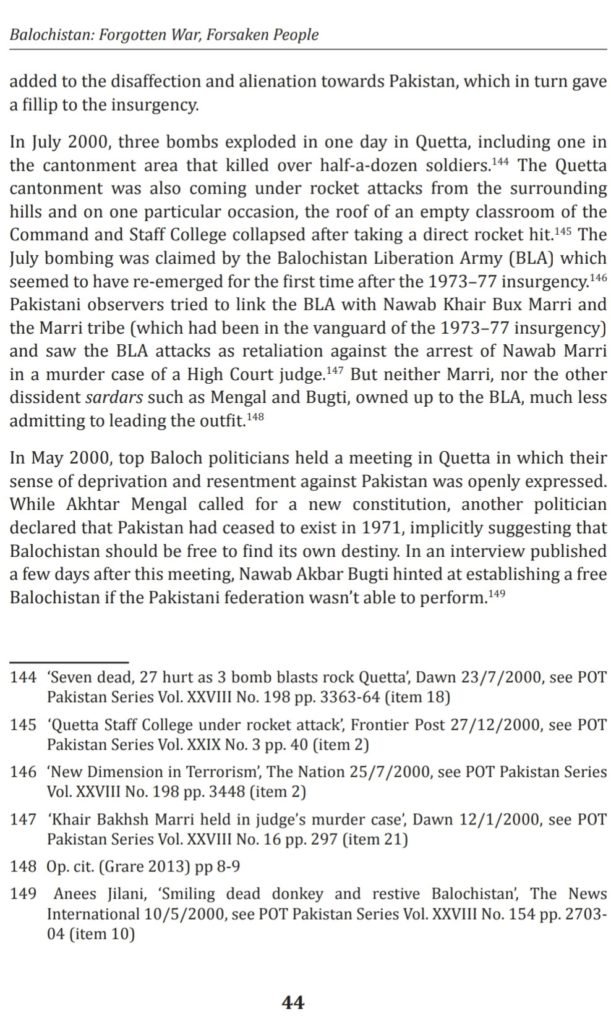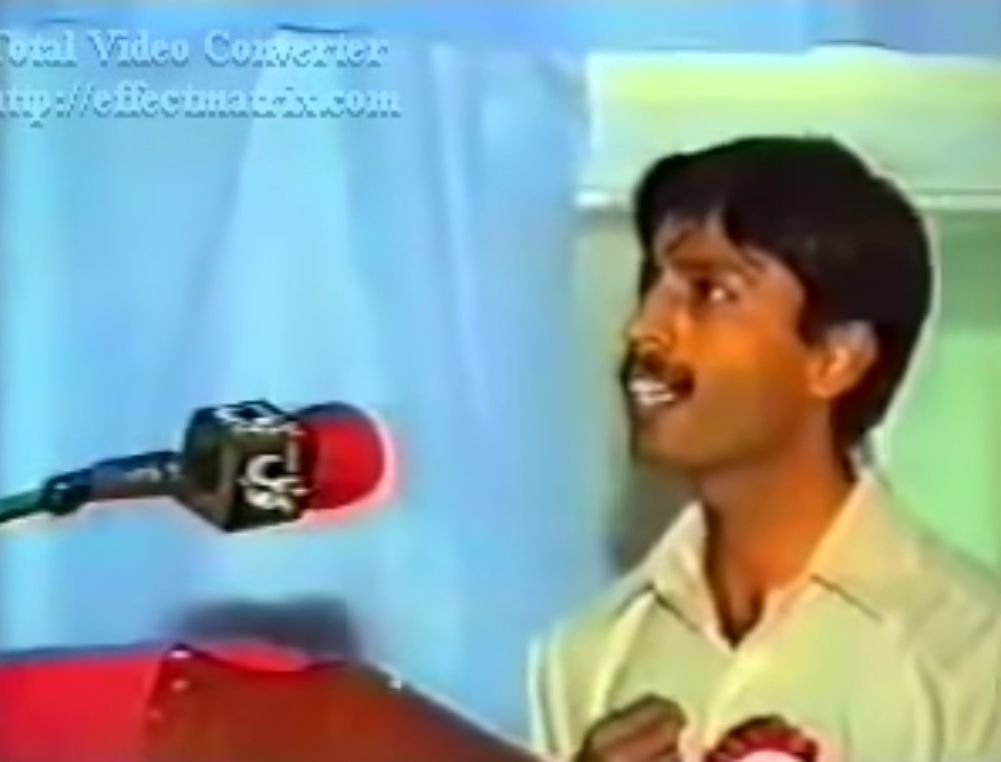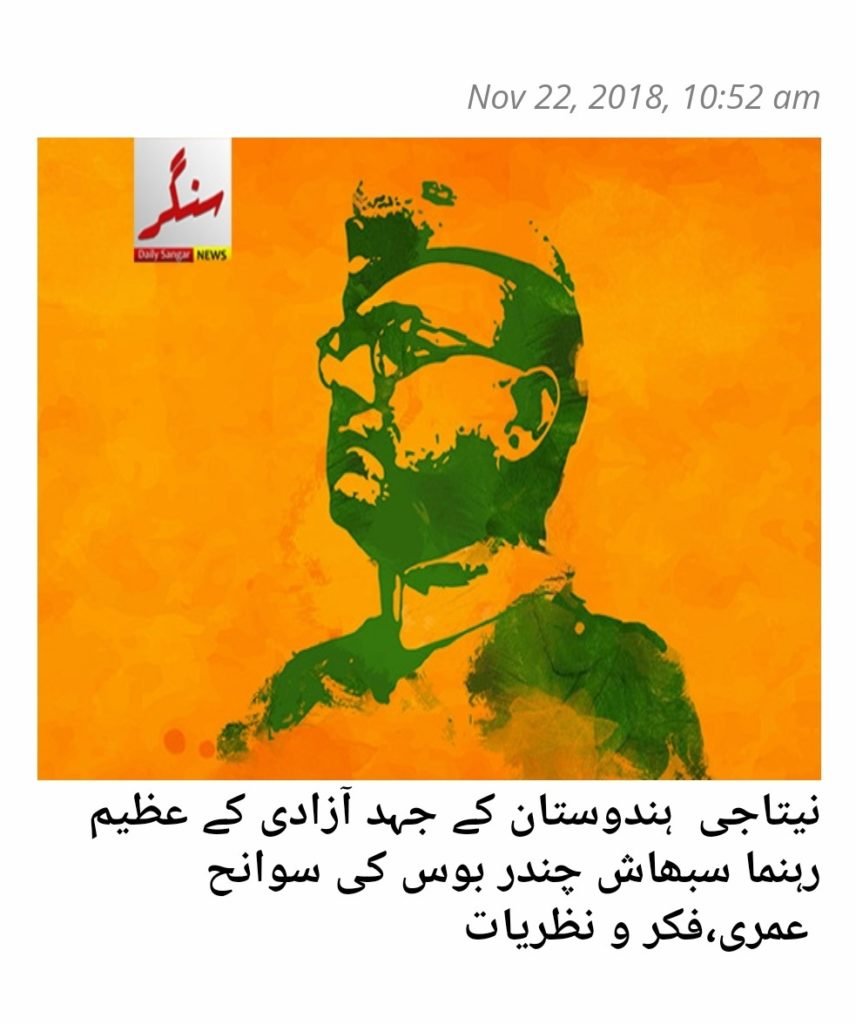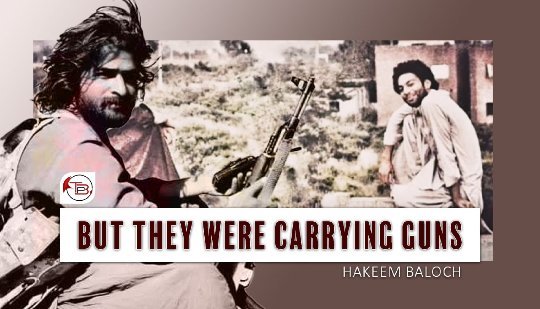Baloch – Pakistan Permanent Conflict started from 1948. The conflict is still continuing. In this series of two articles, we have tried to cover the history of this conflict between Baloch Nation and the Pakistan, starting with 1948 onward (when Balochistan was annexed forcefully by Pakistan Army) till the present day 2019.
In our previous article, “The Baloch Pakistan Permanent Conflict – 1948-1977” we covered detail about this conflict from 1948 (Pakistan came into existence in 1947 and annexed Balochistan in 1948) to 1977. In the present article we are covering this continuous conflict with the Invader, Occupier Pakistan and the people of Balochistan Nation from 1977 till 2019, the present day.
On 5th July 1977, Pakistan’s first democratically elected civilian leader Zulfiqar Ali Bhutto was overthrown in a military coup led by Pakistan’s COAS General Zia Ul Haq. Bhutto was later executed in 1979. Zia’s introduction of Martial Law also saw the end of 4th militant uprising in the restive Balochistan. Most of Bhutto’s 5 years in power spent in battling the Baloch freedom fighters after the dismissal of Balochistan’s provincial government under the then Chief Minister Atta Ullah Mengal. The imprisoned Baloch leaders — including Nawab Khair Bakhsh Marri, Atta Ullah Mengal, the poet Gul Khan Nasir and Ghous Bakhsh Bizenjo — were released by the incoming dictator as a gesture of goodwill. Zia Ul Haq also declared amnesty for all the Baloch who had taken up the arms.
Prior to Bhutto’s removal the Baloch resistance was considerably weakened by Pakistan and Iran coming together to crush the Baloch movement. the Iranian Air Force bombed the Baloch hideouts in Chamalang area in 1974 at the behest of the Pakistani government.
Zia ul Haq’s attempts to win over the Baloch came to nothing as both Nawab Marri and Atta Ullah Mengal went abroad in self-imposed exile in Afghanistan and England respectively. Ghous Bakhsh Bizenjo was unimpressed by Zia’s overtures with religious tone. India’s member of National security board Tilak Deveshar in his latest book The Balochistan Conundrum writes…
“In 1977, President Zia….when he met the Baloch leaders in jail. During the meeting, Zia told them that ‘we are all Muslims, and we should not say that we are Baloch or Pashtuns’. The Baloch leader Mir Ghaus Bakhsh Bizenjo replied that ‘we are Baloch and Pashtuns and we will never make a viable Pakistan except on that foundation’”

Zia Ul Haq’s release of the thousands of imprisoned Baloch activists along and the top leadership ended the Baloch appetite for the continuation of guerrilla war against the Punjabi occupiers. It temporarily halted the bloody chapter in which thousands were left dead; including a high number of casualties for the Pakistani Army. Dr Masood Akbar Kundi writing for Central Asia Journal concluded…
…”the exact number of casualties was never exactly known, but it is believed to have involved “5300 Baloch and 3,300 troops killed”….
Nawab Marri joined his Marri tribesmen already in exile in Afghanistan from where they hoped to continue the armed struggle. Kabul was unable to offer meaningful support for the Baloch cause.
Surprisingly, even the USSR chose not to activate the Baloch guerillas vis-a-vis Pakistan during Afghan War after the Moscow’s occupation of Afghanistan in December 1979.
Nawab Marri, a Marxist by conviction, rued the timidity of the Soviets in not arming the Baloch militarily. In an interview to the Newsline Magazine in 2009, he said, “Soviet bloc never gave us any armies. It only gave us books…Ideology does work, but guns and weapons play a more important role. The Soviets did not give us any guns, bombs or weapons”.
The lackluster approach of the Soviets was another reason the Baloch militancy couldn’t take off during the Afghan war. By 1989 the Soviets retreated and Afghanistan was further plunged into civil with Pakistan’s notorious Inter-Services Intelligence (ISI) calling the shots in propping up the Islamist radicals at the expense of Dr Najibullah led Communists. Nawab Marri returned back to Pakistan in the early 1990s.

Lack of direction and any meaningful external support resulted in Baloch not taking up the arms for almost next 25 years. By the year 2000 the new generation of Baloch guerillas drawing inspiration from the predecessors of previous 4 wars of liberation were ready to lock horns with Islamabad for the fifth time.
Turn of the millenium
Pakistan is facing the its 5th militant insurgency in Balochistan — more deadlier than the previous 4 — that refuses to die down. This time around the Baloch movement is multi-faceted, making it much more effective…
• Armed struggle spearheaded by almost half a dozen militant wings spread all over Balochistan. Counter measures by Pakistani army.
• Women contribution to the struggle.
• Political parties openly pushing for independence. Human rights orgs and BNP_M.
• Domestic challenges of Pakistan, exploitation and fears of demographic inavsion.
• Karachi attack
The current insurrection against the Pakistani state spiraled out of control following the killing of the prominent nationalist leader Nawab Akbar Bugti in a military operation on 26th August 2006 by the regime of the then military dictator Gen Pervez Musharraf. However the militancy — in its sporadic form — began lot earlier than Bugti’s assassination. The Indian strategic expert Sushant Sareen implies — in Balochistan: Forgotten war, Forsaken people — the ongoing resistance started soon after Gen Pervez Musharraf came to power through military coup on 12th October 1999. The triggers may have been dismissal of Balochistan’s then Chief Minister Akhtar Mengal’s government before Musharraf took over and later implicating Nawab Marri in a murder case after the events of October 1999. Balochistan Liberation Army (BLA) rocked Quetta with 3 bomb blasts including one at the military cantonment July 2000 (3). That was hardly after 9 months of Musharraf’s coup d’état on 12th October 1999. This militancy is in the 19th year and we’re still counting…

The role of the women
For the first time the women have stepped forward playing their part in the freedom struggle. It appears the inclusion of the women was the brainchild of Dr Nazar, which is now bearing fruit. The women have not picked up the guns but they’re on the streets. The importance of the women stepping into the liberation movement was not lost on Dr Allah Nazar Baloch during his BSO days…
…”I appeal to my sisters. If in Palestine, Leila Khaled can pick up arms then can’t my sisters do the same? They should play Leila Khaled’s role. If the Iron Lady Margaret Thatcher can govern over Great Britain, if Tansu Ciller can govern Turkey. Indira Gandhi won a war against Pakistan, then don’t my sisters have the same talent and capability? They should play their role because this is the demand of the times. History is not written just for men. Both men and women make up the history of any nation”…

The contributions of Farzana Majeed, Sammi Baloch and Seema Baloch were highlighted by this writer in Tears of Balochistan. The seasoned campaigner Naila Baloch is best known for highlighting the Baloch case in India. Hafsa Baloch is member BSO-Azad’s South Korea cell. The young activist Mahrang Baloch — after losing her father — took to the streets for the recovery of her brother and succeeded. Mahrang Baloch’s father Abdul Ghaffar Baloch was picked up by the ISI in 2009, his dead body was later discovered with torture marks.
The prominent BSO-Azad leader Karima Baloch was the chairperson of her party until 2018. In 2016 Karima was included in BBC’s list of 100 most influential women. In May 2019 during an interview with ANI news agency Karima Baloch highlighted Pakistan’s greed for the Balochistan’s land and the resources at the expense of the indigenous Baloch people…
…”Pakistan always talks about acquiring the land. They don’t want the Baloch people but want the resources there. It has been its policy of exploiting the resources and make use of its geo-strategic importance since a pro-freedom struggle is ongoing in Balochistan.”…

Bibi Gul Jan and Tayyaba Baloch are chairperson and vice chairperson of Baloch Human Rights Organisation (BHRO) respectively. Hooran Baloch — previously associated with BRP now with VBMP was seen ridiculing Pakistanis on their faces on Indian channel Times Now soon after Indian Prime Minister’s Narendra Modi’s inclusion of Balochistan in the 15th August 2016 Independence Day address to the his countrymen.
The surge, fears and exploitation.
Looking at the present day violence only through the prism of forced annexation in 1948 and the subsequent military operations will be an understatement. The illegal occupation is equally matched by the 70 years of economic exploitation of the minerals and resources rich Baloch land for the benefit of Punjab at the expense of the locals. The member of Akhtar Mengal’s BNP (M) Sana Baloch’s explanation below is only the tip of the iceberg…
…”Resource-rich Balochistan is no less miserable a region than Congo. This under-reported region is strategically located and shares a 1200 km coastline with the Persian Gulf region. It also shares a 900 km border with Afghanistan’s insurgency- hit areas.
Since 1952, the centre in Islamabad has been extracting large quantities of gas and coal from Balochistan but has been denying the people of the area their rights and benefits accruing from this activity. The region has been exploited in terms of its strategic land, marine resources, uranium and countless minerals but the Baloch people have remained illiterate and destitute.
Why haven’t Pakistan’s ‘blood and conflict’ resources never attracted international attention? Conversely, the discovery of what is said to be the world’s second largest copper-gold reserve, Reko Diq, in Balochistan’s Chaghi region has attracted many greedy companies, benefiting from corrupt deals.
The multibillion copper-gold Saindak project is also situated in the Pakistani province of Balochistan. The resources here are being extracted by a Chinese company, without any independent monitoring for the past seven years. According to official reports copper-gold worth $633.573m were produced during 2004-08. The Balochistan government receives a paltry two per cent share, while half the profits go to Beijing and 48 per cent to Islamabad. The fortified Saindak project is a no-go area for the Baloch people”…
Pakistan’s population is set to exceed 300 million by 2050. Lack of resources, economic development and water shortages will eventually boomerang on the country over next 30 years or so. Sparsely populated Balochistan accounts for less than 6% of the Pakistan’s population but 43% of its total land. The Baloch people fear — justifiably so — they’ll be reduced to a thin minority in their own homeland with the influx of outsiders, mainly Punjabis. For example; the dominant Punjab makes up for 53% of country’s population but only has 25% of its land. What makes it more intriguing is the bulk of Balochistan’s population residing in the small pockets in the far flung areas means more than 90% of Baloch territory has no record of ownership. Outsiders purchasing land and displacing locals — with the blessings of Rawalpindi — is already happening in Gwadar. One can only imagine what the deep state will do with the undemarcated swaths of territory when they have the nerve to dislocate people from the settled areas. The Express Tribune article dated 25 November 2010 recorded…
…”Senior officials of the Balochistan government have revealed that they have no ownership record of nearly 90% of land in the country’s largest but most impoverished province, while a project to computerise land records is awaiting sanction of its budget.
Revenue Department Secretary Javed Raheem told The Express Tribune that while the province accounts for nearly 43% of Pakistan’s land mass, no survey has been carried out for most of province’s lands since partition, hence their library of ownership records is grossly thin.
The lack of records means mafias and manual land record keepers, the patwaris, have had free reign to grab and even sell a piece of land many times over.
“There are hundreds of instances where one piece of land was sold to more than one person. It all happened due to the absence of records,” Raheem lamented. He added that the situation was so bad that some districts like Pishin, Panjgur and parts of Awaran had no official records of land ownership”…
A Baloch friend connected to the nationalist struggle had this to say.

Non-violent front
This militant struggle is further legitimized by the mass support and on-ground political struggle. Let’s look at the outfits openly batting for the independence…
1. Baloch Republican Party (BRP) is chaired by Brahumdagh Bugti. Abdul Nawaz Bugti is BRP’s face at United Nations Human Rights Council
2. Voice for Missing Baloch Persons (VMBP) is run by Mama Qadeer. Farzana Majeed, Hooran Baloch & Seema Baloch are also associated with VMBP. It is rather a humantarian organisation just like Baloch Human Rights Organisation. Their sympathies lie with the freedom fighters.
3. BSO-Azad was established by Dr Nazar in 2002. After him taking to the mountains this organsisation threw up the gems; Zakir Majeed, Zahid Baloch, Shabir Baloch, Qambar Chakar and Sangat Sana. The first 3 are were abducted by ISI and are still officially missing. Qambar Chakar and Sangat Sana were brutally assassinated by the agencies.
4. Balochistan National Movement (BNM) is led by Khalil Baloch. Karima Baloch’s spouse Hammal Haidar represents the BNM in the western world. BNM’s founder Ghulam Muhammad Baloch — the legendary martyr — was killed and dumped by the ISI in 2009.
5. World Baloch Organisation (WBO) had the Pakistani government reeling in 2017 with the ‘Free Balochistan’ adverts flying in London, Manchester, Geneva, New York and Washington. WBO is run by Javed Mengal (Akhtar Mengal’s brother) and his sons Bhawal Mengal and Nurdin Mengal
6. Free Balochistan Movement best known as FBM is led Nawab Khair Bakhsh Marri’s son Harbiar Marri. He has an uncompromising stance even on the Baloch region under Iran’s control.
The above mentioned parties out rightly reject any compromise with the Pakistani state. They have taken the struggle beyond borders; BRP, BSO-A, BNM, WBO & VMBP have made their presence felt in Sweden, Germany, Switzerland, England, Canada, South Korea et al.
Balochistan Awami Party, National Party, Jamhoori Watan Party and BNP-M work within the federation of Pakistan. Needless to say they are collaborators with the enemy save BNP-M. The present Balochistan Chief Minister Jam Kamal Khan’s elders — the feudal lords of Lasbela — were in cahoots with Jinnah at the cost of Baloch independence in 1948. A Baloch friend told this scribe, the 4 Chief Ministers of Balochistan came from this family alone. As mentioned earlier this writer does not subscribe to painting Akhtar Mengal with the same brush as the other quislings. Mengal is not in the parliament in the capacity of a “Pakistani patriot”. His alliance with Imran Khan is conditional based on 6 points in Memorandum of understanding which sealed the alliance with Pakistan Tehrik-e-Insaf dispensation ruling Islamabad…
1. The issue of Missing Persons should be resolved expeditiously with firm commitment and future occurrences should be avoided. National Action Plan should be implemented in letter and spirit.
2. Demographic identity of Balochistan should be protected im consultation with all political parties and necessary legislation should be enacted to safeguard the rights of Balochistan.
3. Share of mineral resources will be renegotiated to the benefit of respective province with full transparency. Refinery of gold/copper and other materials should be built in Balochistan.
4. Major dams must be built in Balochistan, so that underground water reserves may be replenished, to avoid risk of migration
5. 6% of quota of Balochistan in Federal Services should be honoured and Balochistan quota in foreign services should be adopted regularly.
6. All Afghan refugees should be repatriated honourably to their country.
Given how the deep state operates and with Pakistan’s economic woes it is virtually impossible for the military puppet Prime Minister Imran Khan ever living upto his promises even if he sincerely wanted to do so. Pakistan Army’s repression — forceful abductions — and accountability over the dealings with Beijing is a no-go zone for the political dispensation. Despite the 18th Amendment, which gives provinces a greater say in their resources, the federal government continues plundering the Baloch resources to feed Punjab and to please the Chinese. The generals will not risk the wrath of Beijing for the Baloch people whom they regard as subhumans. Balochistan becomes more significant in overcoming the impending population crisis and dwindling resources of Pakistan, and they’re already working on it. Afghan refugees help maintain demographic imbalance in Balochistan. Secondly, ISI wouldn’t want to upset the Pathans and the Afghan Taliban for their strategic depth. The military will not cave in.
Mengal is not too hopeful Imm the Dim will live up to his promises. Hardly 3 months into the alliance he has already hinted (more than once) at walking out on PTI should they fail in their commitnents. Then why is he in it? Due to lack of meaningful external support Mengal is rather pragmatic. He uses the political platform to vent his frusrtations at the Pakistani federation. He may not endorse the violence of the armed struggle but he sympathises to the idea of independence. BNP-Mengal openly endorses the right of self determination for Balochistan. In 2013, while talking to Pakistani media Mengal said “If right of self-determination could be demanded for Kashmir, why not for Balochistan”.
The basic difference between Dr Nazar and Mengal is the former openly calls for freedom without getting into a nitty-gritty of plebiscite, the latter chooses his words — “self determination” — carefully knowing fully well the large majority of the public will vote for the independence should the opportunity ever comes. The approach and the choice of words may differ but the objective of Dr Nazar and Mengal remains same. Mengal approaches Pakistan’s “democratic” process anticipating it will serve the Baloch cause better in future should the international scenario ever turn in their. As discussed in Tears of Balochistan write-up, BNP-M’s leaders were spotted with the VMBP protests. Naseer Gichki asked for international intervention. Another BNP leader Lashkari Raisani said “Balochistan is not a province but our motherland”. On 28th November 2018 Mengal himself reached out to Mama Qadeer and Seema Baloch in Quetta.
Militancy & Counter insurgency
The militant groups fighting for the liberation are; Dr Nazar’s Balochistan Liberation Front (BLF). The now martyred Aslam Baloch headed Balochistan Liberation Army (BLA). Harbiar Marri is often accused of leading BLA but the exiled leader has denied it, similar allegations were levelled towards his younger sibling Mehran Marri controlling United Baloch Army (UBA). Balochistan Republican Army (BRA), Balochistan Republican Guard (BRG) are Lashkar e Balochistan et al make up the violent face of the Baloch resistence. These groups operate throughout Balochistan hitting at the Pakistan security forces, and, the Chinese interests regularly. Some interesting happenings of 2018 suggests the armed struggle has come a long way from the previous failures against the might of the Pakistani army. In the past the differences in between the militias hampered the progress. This seems to be changing on the ground. On 23 February 2018 BRA announced they have agreed to align together with UBA & Lashkar e Balochistan for the greater cause. The even better news came through on 10th November 2018; two of the biggest armed wings BLF and BLA — headed by Dr Nazar and Aslam Baloch respectively — along with BRG announced the formation of an umbrella organisation, Baloch Raaji Aaajohi e Sangar (BRAS) meaning Baloch National Freedom Front. The following excerpt is from nationalist mouthpiece the Balochistan Post dated 10 November 2018…
…”In a joint statement released to media on Saturday, armed organisations Balochistan Liberation Front (BLF), Baloch Liberation Army (BLA) and Baloch Republican Guards (BRG) announced to form an umbrella organisation, Baloch Raaji Aaajohi e Sangar (BRAS). The name of the organisation, which is in Balochi language, means Baloch National Freedom Front.
In the statement the newly formed organisation stated: “unification and consolidation of the national strength is the only way forward to get rid of Pakistani occupation of Balochistan”.
BLA and BLF had announced on 30 October 2017 that both organisation have formed a alliance and will carry out joint attacks on Pakistani forces. BRG joined the alliance on 20th April 2018.
Since then BLA and BLF have carried out several joint attacks against Pakistani forces, the most prominent attack was in October 2018 when fighters from both organisations targeted the convoy of Pakistani Major General Saeed Ahmed Nagra. Multiple Pakistani personnel were killed in the attack.
In today’s statement BRAS said that their alliance was not hallow promises but consolidation of power was carried out in real terms. “To continue the course and move forward toward a national army, the alliance has now formed BRAS to further its activities,” the statement read”…

The advantages of loose alliance allow the groups to come together when required while maintaining autonomy at the same.
Pakistani repression is not only restricted towards the violent militant groups. ISI’s counter insurgency strategy is multi-pronged. The security forces are guilty of killing and dumping the nationalist activists regardless of whether the victims were involved in militancy or not. Ghulam Muhammad Baloch, Qambar Chakar, Saba Dashtyari, Abdul Ghaffar Langov, Sangat Sana, Dr Manan Baloch and countless others were butchered in a cold blooded manner. None of them were involved in the armed struggle themselves. In an attempt to weed out the secular nationalist liberation movement Pakistan played their old trump card of political Islam in Balochistan too. The charity wing of Hafiz Saeed Falah e Insaniyat Foundation (FIF) was encouraged — in the guise of social work — to establish religious schools in Balochistan following the 2013 earthquake. The buck doesn’t stops there. The state has acquired the services of the traitors within the Baloch. To name few Shafiq Mengal and Balochistan’s former Home Minister Sarfraz Bugti run the radical Islamist militant wings — aka death squads — doing the dirty work for the masters in Rawalpindi. The death squads are involved in killing the nationalist activists with the nod of approval from the goons in khaki. These indoctrinated lot pass off as patriots in Pakistani circles. Siraj Raisani (now dead) was also on ISI’s payroll, his funeral was attended by Gen Qamar Javed Bajwa himself. Why the Pakistani Army Chief felt the need to attend Raisani’s last journey is best encapsulated by Nirupama Subramanian writing for the Indian Express following the Mastung bomb blast claiming Raisani’s life…
…Siraj Raisani…was hailed by Pakistan Army chief General Qamar Javed Bajwa as a “soldier of Pakistan” whose sacrifice the country would never forget. Major Gen Asif Ghafoor, head of Inter Services Public Relations, quoted Bajwa describing Raisani as a “die hard brave patriot Pakistani who shall be remembered for his commitment and contributions”….Since his death, images of Siraj standing on the Indian Tricolour have circulated on social media. Pakistan blames Baloch separatism and terrorism on India, and the photographs have turned him into a hero….“The Pakistan Army is desperately looking for loyal Pakistanis in Balochistan,” said Malik Siraj Akbar, a Washington-based Baloch journalist. “The BAP is basically a platform for all those people who have been pro-Pakistan for ages.”…Siraj wore his loyalty on his sleeve. On his Facebook page, he ends all posts with “Allah o Akbar, One Balochistan, One Pakistan”. Before his violent end, he was famous as the man who created the “longest” Pakistani flag, stretching from Quetta to Mastung, at the last Pakistan Independence Day on August 14…On March 23, which is celebrated as Pakistan Day, he praised the Pakistan Army and pledged to fight shoulder to shoulder with it. In one Facebook post, he said “ready to fight, ready to kill” to defend Pakistan”….
Despite Pakistan’s best efforts to render Balochistan an information black hole the Baloch nationalists are succeeding in taking their plight to the outside world. The mainstream Pakistani media channels operate in connivance with the ISPR. The media blackout not only allows the GHQ in hide the military excesses but also covering up the daily attacks on Pakistani security forces all over Balochistan by the above mentioned freedom fighters groups. In the age of social media and modern technology nothing remains a secret. The Baloch struggle is best highlighted by he nationalist newspapers Daily Sangar and The Balochistan Post. Daily Sangar produces brief videos every week documenting Pakistani atrocities. The Balochistan Post has an English site for the international audience to benefit from. This writer has accessed the Urdu medium sites of the two papers. The political understanding of the activists connected to the papers is laudable. This is not a tribal movement as Pakistani critics of the Baloch movement allege. Daily Sangar even produced a literature on the renowned Indian freedom icon Subhash Chandra Bose who is fondly known as Netaji in India.

Current scenario
BLA’s attack on Chinese Counsulate in Karachi on 23rd November 2018 sent shockwaves in Islamabad, Beijing amd the world at large. Four days later the BLA chief Aslam Baloch and Dr Nazar warned to more attacks will continue on Chinese and Pakistani interests until the liberation of Balochistan. The high profile Karachi attack is the first time the Baloch freedom fighters carried out high profile hit on Pakistan outside Balochistan. 4 months earlier, on 11th August 2018 Rehan Baloch — son BLA chief Aslam Baloch — blew himself up on bus carrying Chinese workers on CPEC projects in Dalbandin, Balochistan — killing 2 Chinese citizens (31). China and Pakistan were more defiant in their responses. In reality, the CPEC is not about the economics but geo-strategic goals of China assisted by Pakistan. The attack on the Consulate is unlikely to force Chinese to re-consider its investments.
The ISI network did manage to track BLA Commander Ustad Aslam Baloch in Kandahar and assassinate him with 5 accomplices on 26 Dec 2018, a month after the Karachi attack. If Pakistanis believed removing Aslam Baloch from the scene would be the end of Baloch freedom movement they were given nasty surprises in Ormara and Gwadar in April and May if 2019 respectively.
Baloch Raaji Aajohi-e-Sangar’s (BRAS) deadly attack in Southern Balochistan on 18th April 2019 left 14 people dead. The usually silent Pakistan’s mainstream media — both the print and the electronic — were compelled to report the gruesome killings in the coastal town of Ormara near Gwadar. The Dawn newspaper had to deviate from the original report on the killings of “14 civilians” to “11 security among 14” killed. The umbrella organistaion of the Baloch freedom fighters BRAS in their official statement — released soon after the attack — affirmed all 14 killed were from the Pakistan Navy, Coast Guards, Air Force and the informers connected to the occupying state. The following day the Pakistani establishment were forced into admission all the slain men were indeed from Pakistani security services.
Pakistanis and Chinese were left reeling on 11th May 2019 when the Baloch gunmen successfully breached the highly guarded Pearl Continental hotel in Gwadar. It took Pakistan Army more than 24 hours to secure the hotel. Pakistan officially accepted 5 deaths after the attack. The Gwadar attack shook even the Chinese so much that CGTN were forced to report it.
The attacks in Karachi, Ormara and Gwada prove this much the insurgency in Balochistan is far from over. In 2011, courtesy of Al Jazeera, Ustad Aslam Baloch (he appeared as Baloch Khan in the documentary) warned Lahore, Islamabad and Rawalpindi could be the future targets of the Baloch freedom fighters. Has that time arrived? Only a time will tell if the Baloch – Pakistan conflict will end, but the signs are encouraging.
Time will answer these questions: When will this Baloch – Pakistan Permanent conflict end? Will Balochistan get Independence from the repressive state of Pakistan? Will the International Community wake up to the Human Rights Abuses in Balochistan by repressive Pakistan Army? Will the Pakistan Army Generals responsible for the Genocide of Baloch people be tried for War Crimes in International Court?
We are covering all the major events in the Baloch Pakistan Permanent Conflict till date and highlight the struggle of Balochistan Freedom Fighters. Here are our recent articles:-
Multiple Balochistan Freedom Fighter Attacks – No 14 August Functions
Balochistan Independence Day Conference In Frankfurt, Germany, Demonstration In South Korea
Balochistan Freedom Fighters Killed 14 Pakistan Soldiers. Engineers, Students Strikes Continue
Balochistan Independence Day – Freedom Fighters Blew Up Railway Track
We will continue to update our readers about this Baloch Pakistan Permanent Conflict via updated articles in future.
About the Author: Faisal Hussain, the author is a Nationalist Indian, based in UK. He has done extensive research on the nationalist movements in Balochistan.
Follow us at:
Twitter Handle: @communique_news
Parler Handle: @newscommuniquecom







